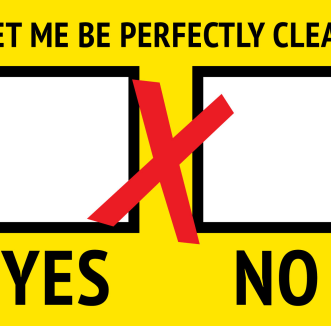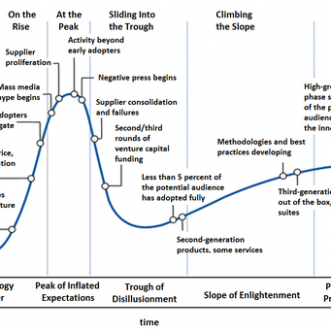
FAClues
What question does your business get asked over and over again?
What could you do to save people having to ask it?

What question does your business get asked over and over again?
What could you do to save people having to ask it?

Measuring how you share your Promise is simple. Measure how many promises you’ve made. In other words, measure the result of your activity – enrolled, signed-up clients or customers.
But if you want to improve the way you share your Promise, you need more detailed feedback than that. You need to delve deeper and measure what’s going on inside it.
So, when you show up in places where the people you serve hang out, how many of them notice that you’re there? Do you get noticed more in some places than others? Are you getting noticed by the right people?
When some of those people evaluate you, what information do they use to do that? Do they visit your website or listen to your podcast? Do they read your blog? Do they look you up on LinkedIn? How many of them subscribe? How many come to the talks you give?
Of the people who’ve evaluated you, how many do you get to have a conversation with? How do those conversations go? What makes them go well? What makes them go badly? How many of them should not have happened, because you are not right for each other? How many result in someone signing up for something low-risk, as a way of trying you out?
And once people have given you a trial, how many sign up for something more permanent?
This will all sound familiar. Businesses have thought of selling as a process for a long time. I think it’s its more useful to frame it as a buying process, with the aim of making it as easy as possible for the people you are right for to find you, then get to know, like and trust you enough to enroll with you.
And as easy as possible for the people you can’t help to reject you as early as possible.
Measure how well you do both.

If you want to improve anything, you have to know how well it is already working. That of course means measurement.
We tend to think that this means measuring output. But that isn’t enough.
Measuring the total profit in my business tells me whether or not I’m doing well, it doesn’t tell me where to look for the the source of my success or failure.
What’s also needed is a measurement of flow. How fast, or how slowly, do prospects and clients travel through my business? Are there any leaks? Are there blockages?
It so happens that the simplest way to measure this for a business is time spent working on a process. So the better defined your processes are, the more diagnostic the measurement can be.
The good news is that you can start at Share Promise and Keep Promise, and learn downwards from there.

On Tuesday, I found out from my dentist that it’s likely to be a fortnight before I get even a temporary fix for my missing front tooth. “I’ll try and spe

Your Promise of Value drives the way everything works in your business. Nowhere more so than in your Keep Promise processes.
Two firms can ‘do the same thing’, yet deliver their services very differently, because the people they serve are different, and consequently their Promise is different.
Two words of caution:
Your unique Promise, and more importantly your unique way of delivering on it is where the value is for your clients. Do it on purpose.
Nurture it, protect it, document it and you’ll be able to crystallise that value when you sell.

As soon as it happened, I knew, and was annoyed. With myself. For doing the one thing I shouldn’t do, and generally avoid doing – biting on that front crown.
But I did, and it broke, and now I have to rearrange my day. The podcast I was going to record will have to be rescheduled, and I won’t be out for dinner tonight. On the other hand, I’ll move some of the jobs I’d scheduled for tomorrow to today, and with a bit of luck I’ll be back on track, or not far off it by Monday, ready to face the world again.
It’s tempting to live your life as if it were a soap opera, and hype every mishap into a dire misfortune, every good thing into a heroic victory.
But it isn’t sensible, and it isn’t necessary. Life is quite interesting enough thank you.

When we listen to a symphony, our experience is of listening to a single score, when in fact what we’re hearing is dozens of separate scores being played in parallel. Orchestration, giving each instrument its own separate score to follow, containing only the notes it plays and the cues it needs, makes it much easier for the violinists or saxophonists to concentrate on their own performance.
Similarly, when we think about how we deliver on our promise to clients, we tend to think of it as a whole. We give everyone the entire score to work from, when what they really need is a clear part to follow, or we create departments, that simply break the score vertically, into sequential sections, with complex and contested boundaries.
Process enables you to think like more like an orchestrator, and break your symphony down horizontally rather than vertically. A process is a part running through your symphony, that can be clearly allocated to a single instrument.
That makes the musician’s life easier, because they know exactly what they have to play and when. And it makes it easier for you to expand your orchestra. Just add more musicians where they are needed.

Keeping your promise is hard. Because your Promise is always much larger than the product or service you deliver.
Remember, what people are really buying is a means of achieving at least some of what they really want – agency, mastery, autonomy, purpose, community, status. That’s what you promised them, and that’s what they’ll be looking for on your journey together.
So you need to keep delivery in tune with that promise.
If you’ve promised to make life easier for them, don’t ask them to go through a complicated sign-up process just to get started. Make everything around delivery as easy as possible for them. Above all, don’t make them jump through endless hoops if something goes wrong.
If you’ve promised to be approachable, don’t hide customer support details in some dark corner of your website. Make your business approachable. That might mean a 24-hour chatline on your website, or giving your mobile number to every client, or even allowing them to contact you in whatever way works for them. It could also mean empowering everyone in your business to deal with any enquiry.
If you’ve promised to be no-frills, basic, direct, make sure your all your communications match that – including how you handle problems.
Anything that jars with your promise undermines it. Everything in tune with it enhances it.
Why make a promise you can’t keep?

Many of us hate the idea of selling. Our stereotype of a salesperson is someone who is pushy, manipulative, only interested in us for the duration of the transaction, and only motivated by their commission. Naturally, we shy away from the idea of being like that.
The answer is to forget selling, and focus on the person who you wish to serve.
The final step in sharing your Promise is to enroll your prospect on the journey they want to take with you. Unlike a sale, enrollment offers the possibility of duration, of being the start of a relationship, of learning from each other, of creating a bond that lasts longer than the work you do together.
Your job in this step is to make absolutely sure that you understand what your prospect wants and needs, to show how traveling with you will get them there; how you mitigate the risk for them, and how that is worth the investment you’re asking them to make. And if you’ve been able to do that, to make the sign-up process as smooth as possible.
Then the hard part starts. Keeping your Promise.

The first time a client buys from you is for both of you, a journey into the unknown.
They hesitate between desire and fear. Between the desire to get to where they want to be and the fear that you might not get them there. Or that you might.
You hesitate between the desire for the chance to prove what you can do for them, and the fear that you will actually have to do it.
A good way to overcome the hesitation is to take a test drive together. Show how you will look after them on the journey, demonstrate the value you will deliver, let them see what it feels like to be travelling with you beside them. Help them to experience your promise first hand.
If you can take them a little nearer to their goal, there’s a good chance they’ll ask you to complete the journey with them. If not, at least you’ll know now that you aren’t the right travelling companion for them.